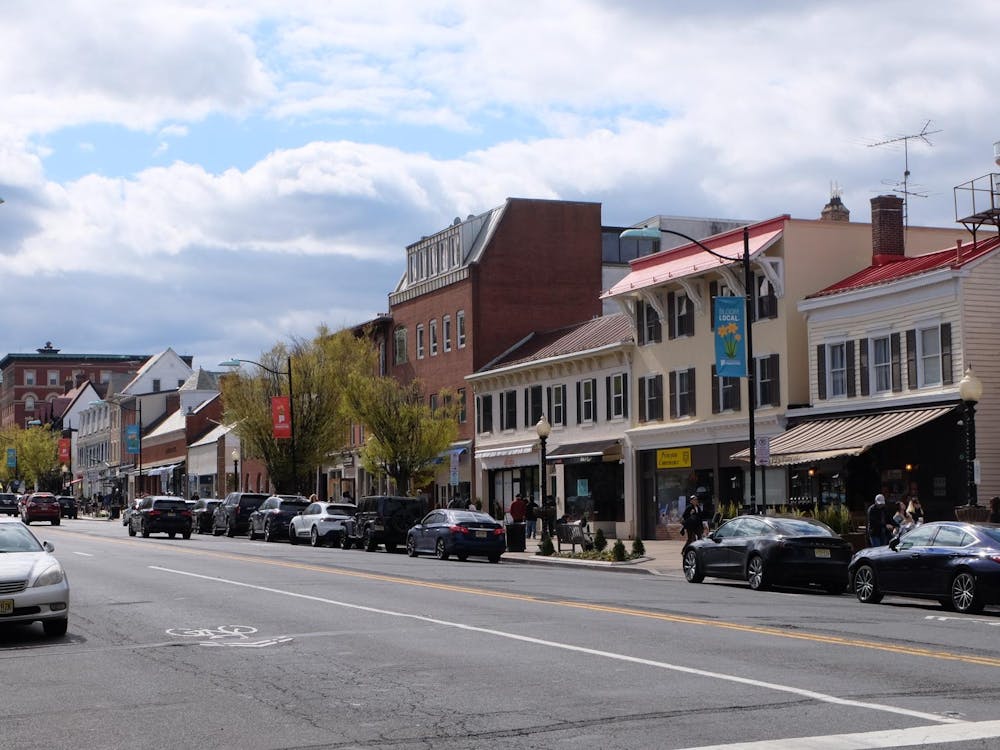Comedian and actor Steve Martin discussed his career and comedy, documenting the rise of his life in stand-up comedy, before a packed McCosh 50 on Thursday night.
“My goal was to make the audience laugh, but to make them unable to describe what had made them laugh,” Martin said of the comic philosophy he developed in his earlier years as a performer. “That was the theory. And for the next 10 years, I pushed it up the hill like Sisyphus.”
He began his career working in Disneyland selling guidebooks at age 10 and knew that he wanted to go into show business from a young age, despite what he called a “lack of natural ability.” He eventually took a job at a nearby magic shop with aspirations of becoming a professional magician. However, his plans changed.
“I noticed something in the shows: They love it when the tricks don’t work,” Martin explained. “I started to lean toward comedy.”
Martin began performing comedy shows at the Bird Cage Theater and other small venues while attending California State University, Long Beach, where he majored in philosophy. The subject had a large impact on his comedy, notably Descartes’ philosophical effort to “start from scratch” in his “Meditations on First Philosophy.” “I thought, ‘Why not do that with comedy?’ ” Martin said.
At age 19, Martin said, he reached a turning point. “I knew I would have to write everything in the act myself,” he said. His inspiration came in large part from an unlikely source — the syllogisms of his logic textbook with their non-sequiturs.
He also said a psychology class had a profound impact on him, as he was bothered by the classic setup and punch-line format of the jokes the class studied.
“I thought, what if there were no punch lines? What if I created tension and never released it?” he said. “The audience would eventually pick their own place to laugh rather than being told when to laugh. That’s what I wanted to do, the opposite of all the rules.”
Martin caught a lucky break when his then-girlfriend Nina, a dancer on the Smothers Brothers Comedy Hour, submitted his work to the show’s head writer and he was consequently hired. This job was the first in a string of lucrative Hollywood writing appointments, which continued until Martin felt the need to work on new material and decided to return to the touring circuit.
Martin continued to tighten his act over the next few years, and, by 1972, in the twilight of the 1960s’ counterculture, he realized his position in the comedy world had changed, he said. “I was no longer at the tail end of an old movement but at the front of a new one,” Martin explained.
Popular success still evaded him, though, until what he called a “miracle” on “The Tonight Show” with Johnny Carson. During his performance — a Las Vegas Lounge singer’s act condensed into two minutes — the camera cut to Carson, who was laughing, and to fellow guest, comedian Sammy Davis, Jr., who had fallen off the couch with laughter.
“Suddenly, I was endorsed,” Martin said, and his career was launched forward. In October 1976, he headlined “Saturday Night Live” for the first time and soon after performed to a crowd of 6,000. “Every time I did ‘SNL,’ the size of the audience increased. The act was on fire,” he said.

It was at this point, though, that his attitude toward comedy began to change, and he became determined to parlay his success into the movie business.
“The act was becoming automatic,” he said, adding that he suffered from a “creative ennui” and found himself “exhausted physically and existentially.” He realized the extent of his frustration with his art when a prop — a guitar — failed to descend from a pulley onto the stage one night, and he found himself in a rage in the wings after the show.
“I never did stand up again,” he said, finishing the show on that note.
The talk, titled “Stand Up: My Rise and Collapse,” was the annual Spencer Trask Lecture and was simulcast in McCosh 10 for the overflowing audience.







